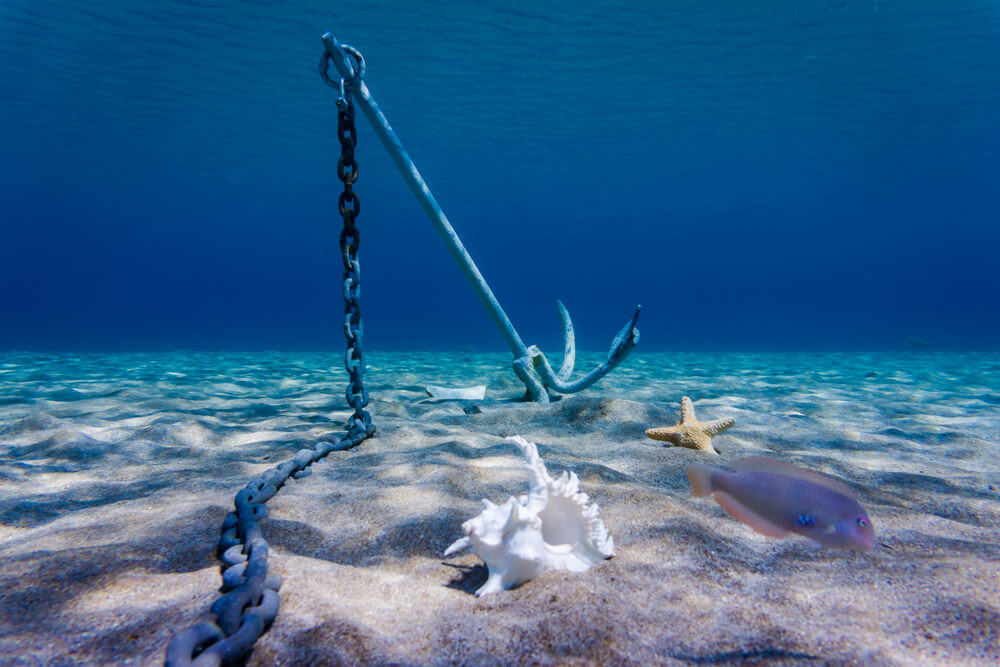So, you’re thinking about buying a brand-new boat, right? Well, that’s a cool decision, TBH. If you love water, it’s literally the best possible way to travel across your area and explore the corners you’ve never seen before. And, if you want to arrange an overnight stay on the water, it’ll help you with that as well. No sweat, literally.
However, only getting a boat isn’t going to be enough in your case. Besides that, you need to get an anchor for the same as well. Keep reading to know which one will be best for you.
Types Of Anchors
Table of Contents
Whether you believe it or not, there is more than one type of anchor available out there. And each of them tends to have a distinct quality on its own.
Here’s what you need to know about them –
Option – 1: Mushroom Anchor.
Small yet sturdy, a mushroom anchor is generally used if you are planning to venture through a place with the softest river bottom. Due to its shape and size, it doesn’t really offer massive holding power or something. However, you can certainly use it for personal watercraft.
If you are thinking about buying a mushroom anchor, it’ll be best for you to go for an item made with cast iron. Also, having a vinyl coating can improve the durability of the product.
Option – 2: Fluke Or Danforth Anchor.
Like the mushroom one, a fluke anchor is pretty easy to stow and folds flat. Due to its shape of the same, it has excellent holding power, too, sometimes more than the mushroom ones. Thus, if you have a small boat to spare, it might be better for you to use the product there.
However, due to the wide design, this type of anchor isn’t really effective for a grassy bottom or deep mud. You can use it for a hard mud or sandy bottom, though.
Option – 3: Plow Anchor.
A plow anchor can be a little trickier to handle than a fluke one. But it can be a decent choice if you are securing it on a bow roller instead of an anchor locker. Also, a plow anchor tends to come with a single penetrating point. So, it will reset itself if the position of the boat changes.
This type of anchor tends to be much more effective in light grass. Nonetheless, if you want, you can also use it while traveling through rivers with softer bottoms too.
Option – 4: Grapnel Anchor.
As the name suggests, a grapnel anchor is shaped like… well, a grappling hook. Thus, it comes with more than one point and is specifically curated to grab submerged timber or rocks. So it doesn’t sink lower in the riverbed and doesn’t offer too much weight-based power.
Nonetheless, due to the design of the product, their holding power tends to be massive. You’ll also be able to find them in more than one design or shape. Click here to read more about it.
Option – 5: Claw Anchor.
A claw anchor is quite similar to the design of the plow anchor. However, it also comes with a broader scoop shape that works pretty well in sandy, mud, and clay bottoms. Besides, it is also strong enough to hold onto a rocky bottom. But don’t depend too much on it.
Unlike a plow anchor, a claw model will change its position depending on the wind direction. However, it might not work too well in thick vegetation or a very hard bottom.
Choose The Best Option For You!
When it comes to choosing a suitable anchor, you can’t really depend on the type of the same. In addition to that, you have to consider its build quality as well. The better its shape is, the more efficiently it’ll perform in a specific place and generate holding power.
Also, when it comes to the material, please choose galvanized steel over everything else. Yes, it might be a little expensive for you. However, it’s corrosion-resistant and showcases much better durability than anything else. Stainless steel can be a decent option here too.
Due to this reason, you should always make a list of “what you need” before purchasing an anchor. It’ll massively help you in your endeavor.

